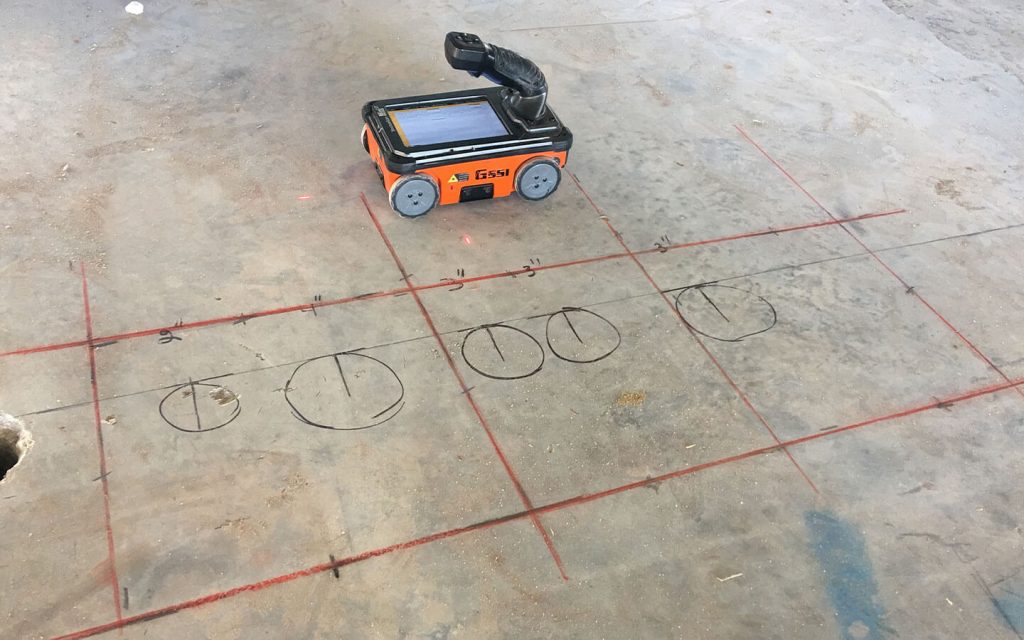Unveil the Transformative Power of Concrete Scanning in Taking Full Advantage Of Efficiency and Safety And Security
Concrete scanning has actually emerged as a crucial tool in the building industry, using unrivaled advantages in boosting job performance and guaranteeing safety criteria. The transformative power of concrete scanning lies in its capability to supply thorough understandings and real-time data, revolutionizing just how tasks are prepared and carried out.
Value of Concrete Scanning
Making sure the structural honesty and safety of construction tasks begins with the crucial step of performing comprehensive concrete scanning. Concrete scanning is a non-destructive method made use of to identify and map subsurface elements within concrete frameworks.
Furthermore, concrete scanning assists in optimizing task timelines and budget plan by preventing unexpected expenses and delays that may emerge due to unexpected obstructions within the concrete. Ultimately, investing in complete concrete scanning is an aggressive method that enhances both performance and security in building and construction projects.
Just How Concrete Scanning Functions
Concrete scanning operates as a critical device in building projects by utilizing advanced innovations to find and map subsurface components without creating architectural damage. Ground Permeating Radar (GPR) and Electromagnetic Induction (EMI) are two main approaches utilized in concrete scanning.
During the scanning process, the information accumulated is evaluated in real-time, allowing immediate identification of potential threats or challenges below the surface area. By using these advanced modern technologies, concrete scanning considerably lowers the threat of expensive damages and injuries on construction sites.
Advantages of Concrete Scanning
One of the main advantages of concrete scanning is the capacity to identify and find ingrained items such as rebar, post-tension cords, and conduits accurately. Concrete scanning helps in planning and developing a lot more efficiently, as it supplies exact information concerning the area and depth of architectural parts.

Instance Research Studies: Concrete Scanning Success

In another case, a building and construction firm made use of 3D concrete scanning to analyze the condition old concrete structures in a historical structure. The comprehensive scans offered beneficial understandings into the level of wear and tear and helped prioritize upkeep efforts properly. By proactively attending to areas of issue news recognized through scanning, the firm was able to extend the lifespan of the framework and make certain resident security.
These case studies emphasize the transformative power of concrete scanning in enhancing effectiveness, accuracy, and security in building and construction tasks.
Executing Concrete Scanning in Projects
Executing innovative scanning technologies throughout building tasks has come to be progressively important for boosting precision and safety. By incorporating concrete scanning into job preparation and execution, building and construction groups can determine potential dangers, such as rebar or post-tension cable televisions, concealed within concrete frameworks. This proactive technique decreases the threat of crashes, delays, and expensive rework, inevitably resulting in extra effective task timelines and budgets.
To execute concrete scanning successfully, project managers must team up carefully with skilled scanning experts to figure out one of the most appropriate scanning techniques for the details task requirements. Engaging scanning experts from the very early stages of a task makes it possible for the team to create detailed scanning plans that deal with crucial locations of concern and make certain detailed data collection.
In addition, including concrete scanning into normal job operations can improve decision-making procedures, as real-time scan data provides prompt insights right into the problem of concrete structures - Concrete Scanning. This data-driven strategy facilitates educated problem-solving and enables teams to make adjustments quickly, cultivating a society of performance and security throughout the task lifecycle

Conclusion
To site web conclude, concrete scanning plays an essential duty in boosting effectiveness and safety and security in building and construction tasks. By utilizing advanced innovation to spot and map out underlying structures within concrete, this process aids to prevent pricey errors, make certain architectural integrity, and lessen dangers on website. With the capability to uncover concealed elements and give precise information, concrete scanning shows to be a useful tool for enhancing job results and making the most of general success.
Concrete scanning is a non-destructive approach used to find and map subsurface elements within concrete frameworks. In addition, concrete scanning assists in maximizing job timelines and budget by preventing unexpected prices and hold-ups that might arise due to unexpected obstructions within the concrete. One remarkable situation study involves a large-scale renovation task where concrete scanning played an essential function in guaranteeing job success.In another case, a building and construction company made use of 3D concrete scanning to evaluate the condition of maturing concrete structures in a historic structure. By incorporating concrete scanning right into project preparation and implementation, construction groups can determine prospective threats, such as rebar or post-tension cable televisions, concealed within concrete structures.